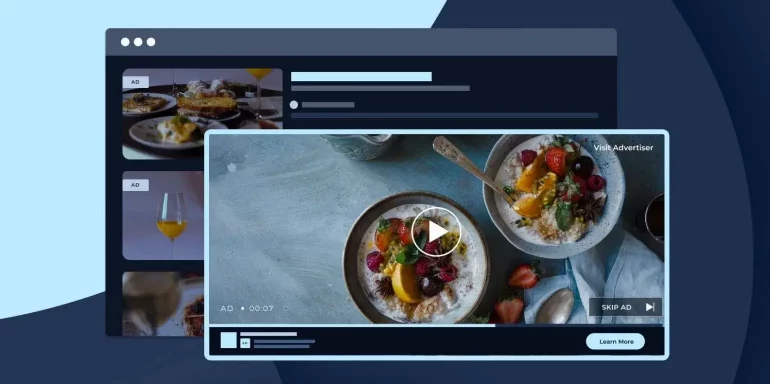The splintered digital marketplace has been both a blessing and a curse for marketers crafting strategies to best engage their customer base.
While the endless variety of distribution channels and flexibility afforded by digital assets certainly give marketers options when crafting a strategy, the sheer number of options can also make a company’s message seem muddled, disconnected, and disengaging.
Fortunately, marketing campaigns can leverage a variety of digital platforms to avoid such pitfalls. When a strategy is deliberate, well-organized, and faithful to the target audience, digital marketing strategies can appeal, engage, and convert in ways that are far more potent and impactful than traditional strategies could likely afford.
YouTube’s TrueView platform is a perfect example of a simple, straightforward, and effective solution for marketers trying to leverage the power of streaming video to build a voice and tell a story. When integrated into a cohesive strategy that is mindful of the customer experience throughout all stages of the sales funnel, including a landing page to serve as a crucial segue between TrueView and a company’s broader inbound marketing, a business is best aligning its marketing efforts to maximize ROI and conversions.
What are YouTube TrueView ads?
In the decade since Google acquired YouTube, the democratized video platform has seen a significant evolution from the days of simple banner ads and “Charlie Bit My Finger” to the most recent incarnation of its TrueView platform. This evolution has coincided with the rapid expansion of the digital environment, now encompassing an immense selection of diverging tastes, interests, and concerns throughout an often fickle consumer base with ever-shortening attention spans.
TrueView has become an ad platform that gives viewers and advertisers alike choices that are tailored to their desired experience.
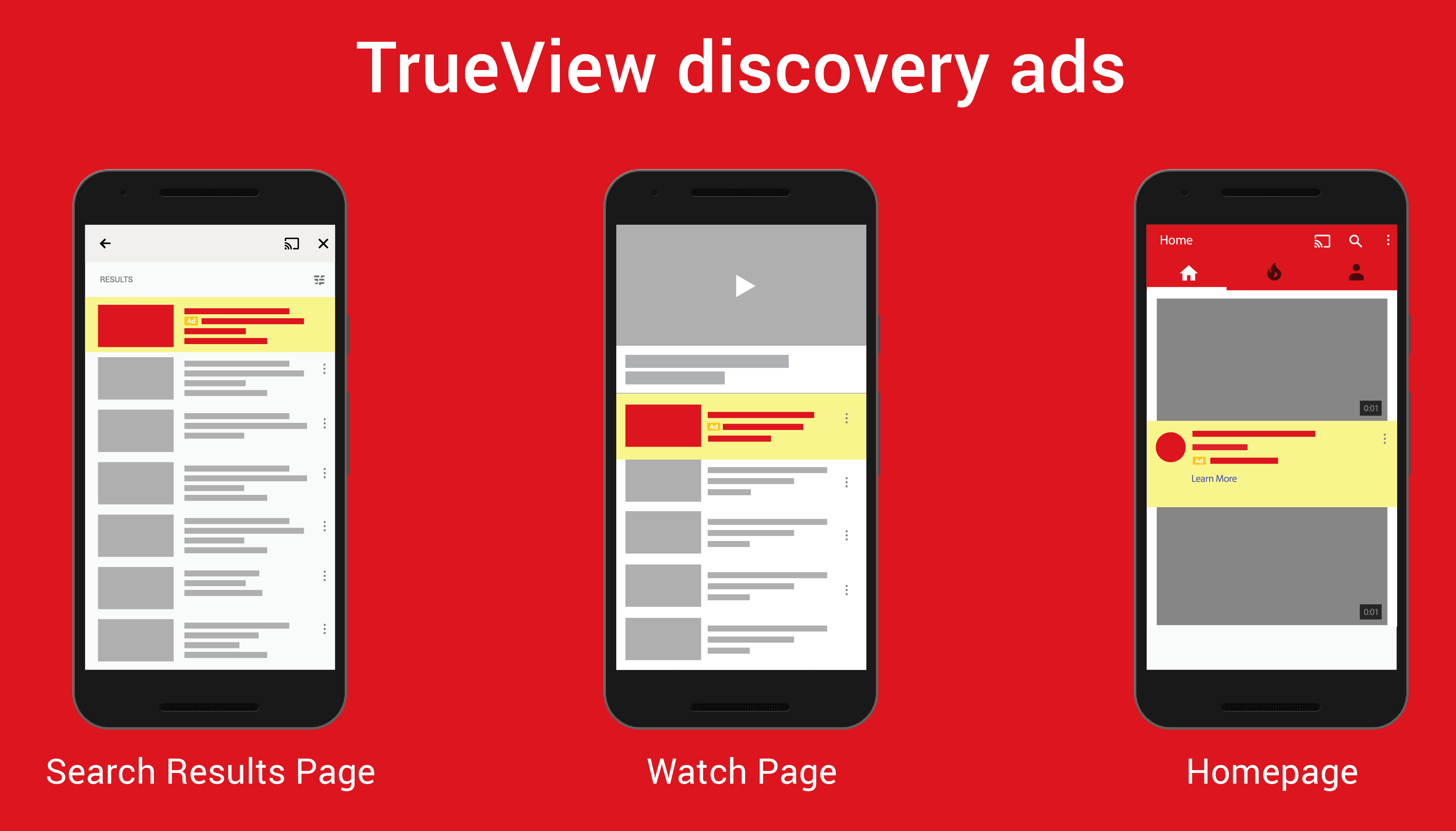
All available through the Google Ads platform, TrueView gives a marketing strategy the agility and flexibility needed to properly engage an audience. Between the in-stream and display models, advertisers can choose which format best fits their specific customer base. Since companies typically only pay for the ads when the audience engages with them in some capacity, TrueView also provides a cost-effective solution that inherently breeds enhanced ROI and likelihood of conversion.
Why should marketers use TrueView ads?
Of course, in a crowded environment where subtle efficiencies can provide the biggest competitive advantages, marketers want to see if TrueView’s proof is actually in the proverbial pudding. Given the impact of the underlying native format, a marketing campaign must properly leverage the unique strengths of streaming video to optimize the customer experience throughout the different stages of the sales funnel:
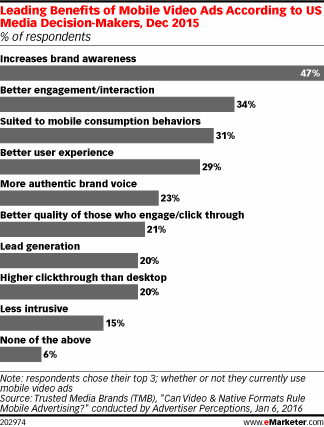
In the particular case of TrueView ads, recent statistical data concerning the platforms effectiveness should quell most overriding concerns and hesitance from marketers unfamiliar with TrueView. To that point, Google testing has shown the current platform to increase click-through rates over 11% from those of simple banner ads. For viewers that do click through, a significant portion of them also view a company’s other videos within 24 hours of the initial viewing.
Furthermore, those viewers are 500% more likely to engage in a company’s call-to-action. For marketing campaigns that integrate well-designed landing pages with TrueView ads and on-site content, these statistics demonstrate the innate power of a cohesive marketing strategy that maximizes the impact of page impressions. TrueView enhances viewer engagement.
When coupled with the flexibility of the YouTube platform, TrueView allows advertisers to tailor their story according to their audience’s preferred consumption methods without sacrificing impact.
Similarities and differences between TrueView and other YouTube ad formats
The TrueView platform is the most flexible choice in terms of creating a customized experience for the viewer. Still, the other YouTube ad formats, pre-roll ads, and pop-up ads, in particular, share a handful of qualities with TrueView.
All YouTube ad formats allow advertisers to focus their attention through variables like basic demographics, interests, subject matter, location, and language. By establishing a familiarity between the ad itself and the accompanying video, YouTube ads are especially effective at matching a message within a relevant context. That familiarity plays a significant role in engaging the viewer and drawing them further into the sales funnel. Pre-roll and pop-up ads are, like TrueView, also cost-effective as the advertiser only pays when a user clicks on a particular ad:
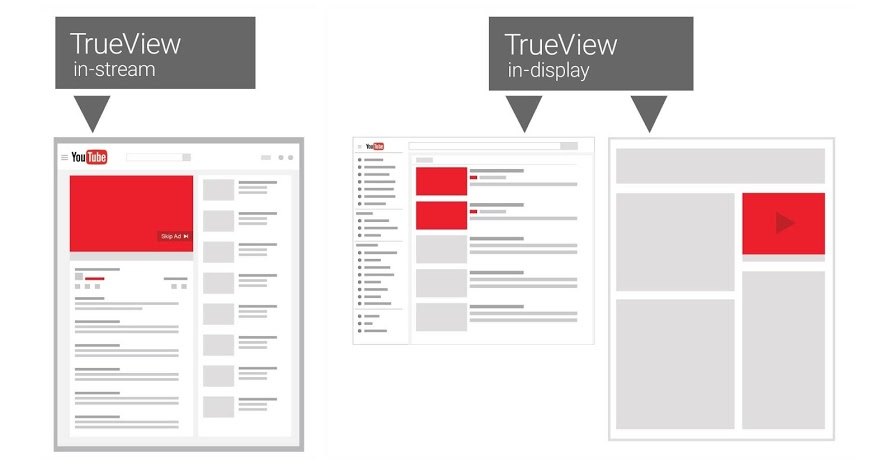
It’s the differences between TrueView and the other YouTube ad formats within Google Ads, however, that truly distinguish it as a preferred choice for advertisers looking to optimize the overall customer experience. Between its three primary formats — in-stream ads and in-display ads including video discovery and bumper ads — TrueView gives advertisers a more immersive impression along with choice for the viewer.
For instance, in-stream ads give viewers the ability to skip the ad after five seconds. The underlying video ad can still be longer, giving it an opportunity to establish tone, voice and story, but the advertiser doesn’t pay unless the user clicks through after 30 seconds or the end of the video, whichever is shorter.
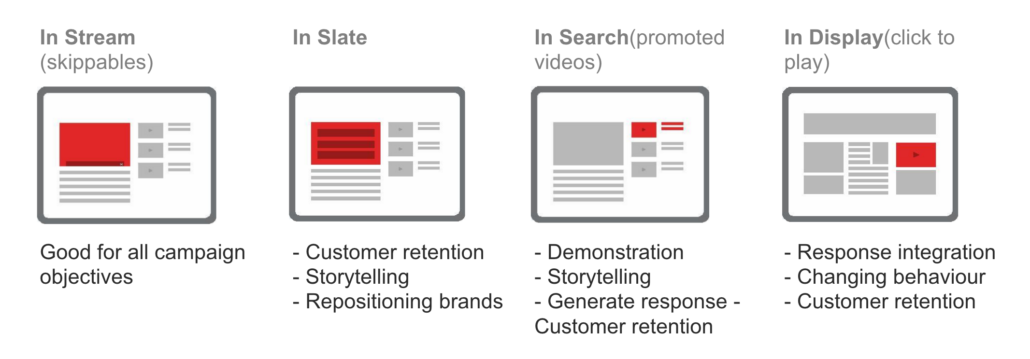
In short, in-stream TrueView ads are better equipped to enhance brand awareness and availability by leveraging the unique traits afforded by streaming video. This is true as evidenced by audience engagement and impact yields 2.8 times greater than YouTube pre-roll ads. In the case of TrueView display ads, their ability to match the content and tone of organic search results on the YouTube platform create a similar familiarity that naturally lends itself to greater CTRs.
No matter if an advertiser chooses the in-stream format of TrueView — embedding a video ad either in front of or within a YouTube video — or a display ad that would appear alongside search results, TrueView provides the advertiser a curated context. This context enhances customer experience and provides a more thorough brand awareness that lends itself to both immediate and future impact.
landing pages are vital to maximize TrueView results
That unique context that allows TrueView ads to better engage an audience is only as effective as the other components of the message. If there is no continuity between the initial ad and the on-page content that was specifically designed to convert to sales, then the added benefits of the TrueView platform have gone to waste.
Effective landing pages are crucial to the process as they bridge the initial audience engagement with other components of an inbound marketing strategy, including the call-to-action, that collectively guide the audience through the sales funnel.
Emphasizing consistency between the ad and the landing page is critical to providing impact to the clicks. For instance, matching the tone and design of the ad and landing page gives the viewer that needed sense of consistency. Mismatched design between the two is often jarring to the audience, something more indicative of meaningless click bait than a cohesive message.
Embedding the original video ad, screenshots, or even dialogue excerpts is another way to successfully create continuity. It should be noted, however, that a landing page should be designed to be equally as effective when serving as a standalone page, separate from the TrueView ad source.
The granular details of a landing page are also important to maximizing customer engagement. Appealing and distinct calls-to-action, concise and familiar copy, a reader-friendly layout, and emphasis on brand and product identity are all integral components of landing page design. By incorporating these traits, a landing page also provides an efficient and effective conduit to a company’s on-site content and sales-oriented assets to maximize ROI and conversions.
landing page examples from TrueView video ads
1. Grammarly
The following is a TrueView in-stream video ad and landing page from Grammarly, a writing-enhancement platform for writers and students:
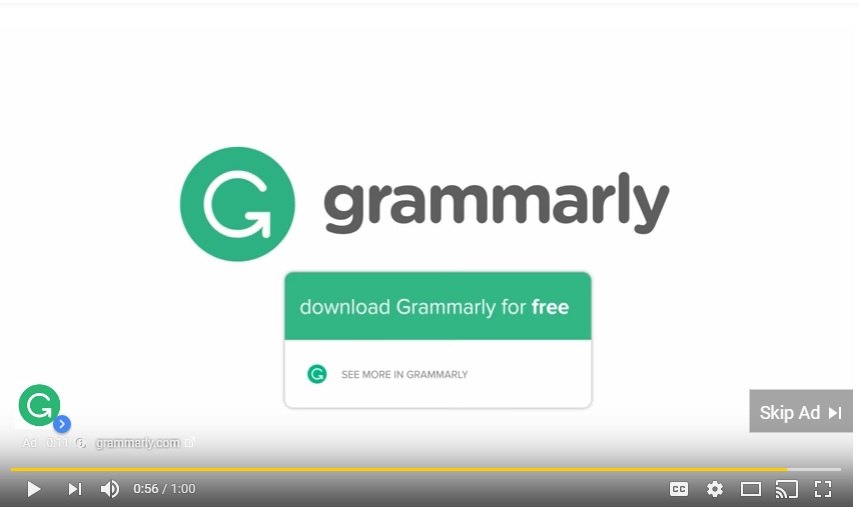
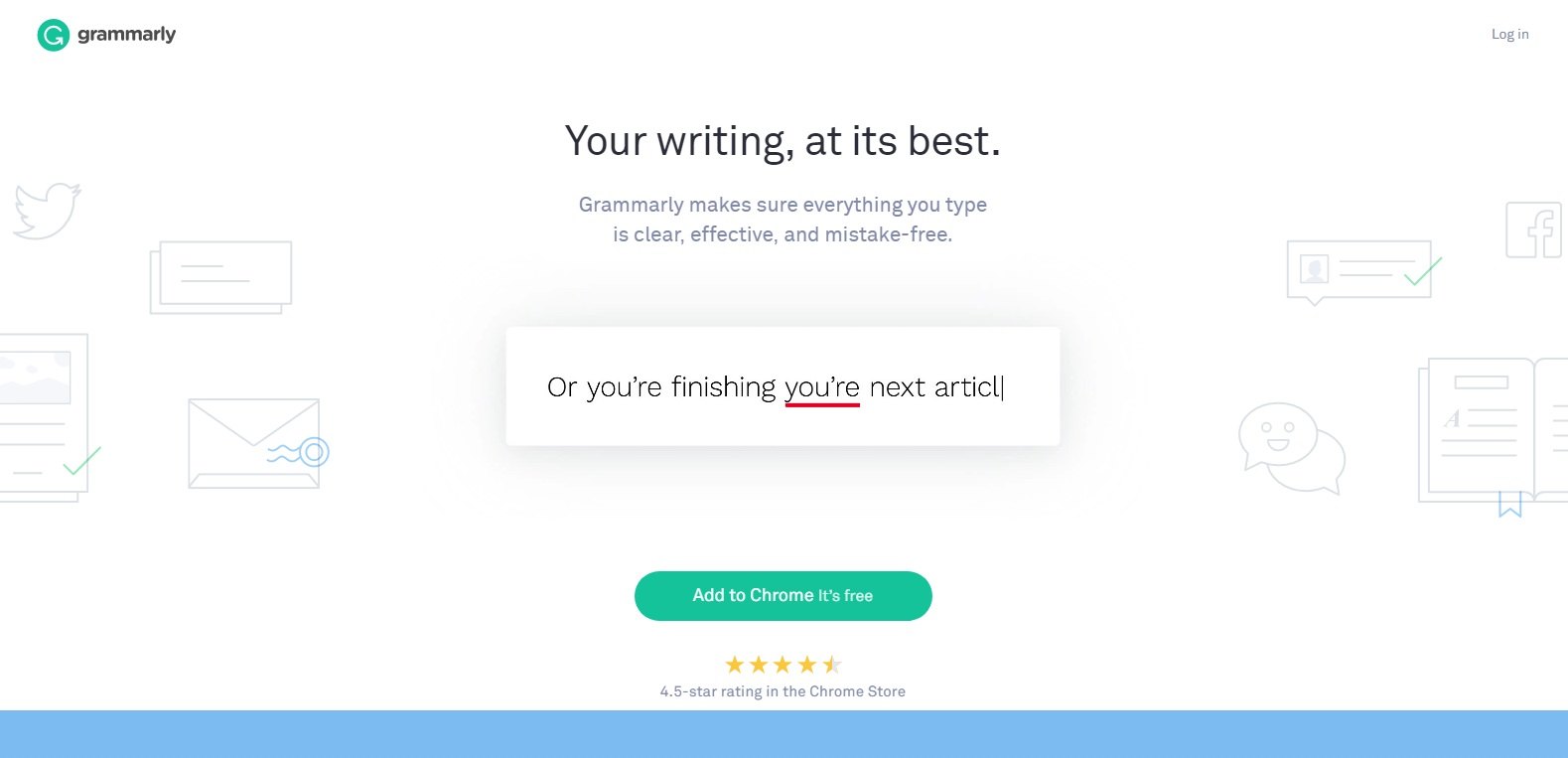
What the page does well:
- Minimal copy is free from distractions and doesn’t dilute a reader’s attention.
- The landing page design matches the layout of the TrueView in-stream ad, creating familiarity and consistency.
- The small, subtle company logo doesn’t provide an active link to other pages within the site, minimizing impact on conversion rates.
- Lots of white space draw attention to the center of the page and the green CTA button.
- The iconography lets visitors know Grammarly works with multiple applications including email, Twitter, and Facebook.
What could be A/B tested:
- The CTA button doesn’t contrast as well as it could with the overall design. It’s design doesn’t sufficiently distinguish it from the other elements on the page, meaning it’s able to easily escape a reader’s attention.
- The scrolling text in the middle of the screen, while somewhat novel, is slow-paced and doesn’t quickly convey the benefits of the service.
- No trust signals could make users hesitant to download the application to their browser.
2. RSA Archer
RSA Archer, an enterprise solution provider for companies and accounting firms, uses YouTube TrueView ads to offer a free ebook to its B2B customer base:
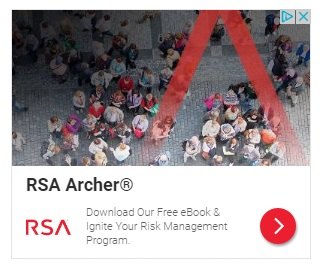
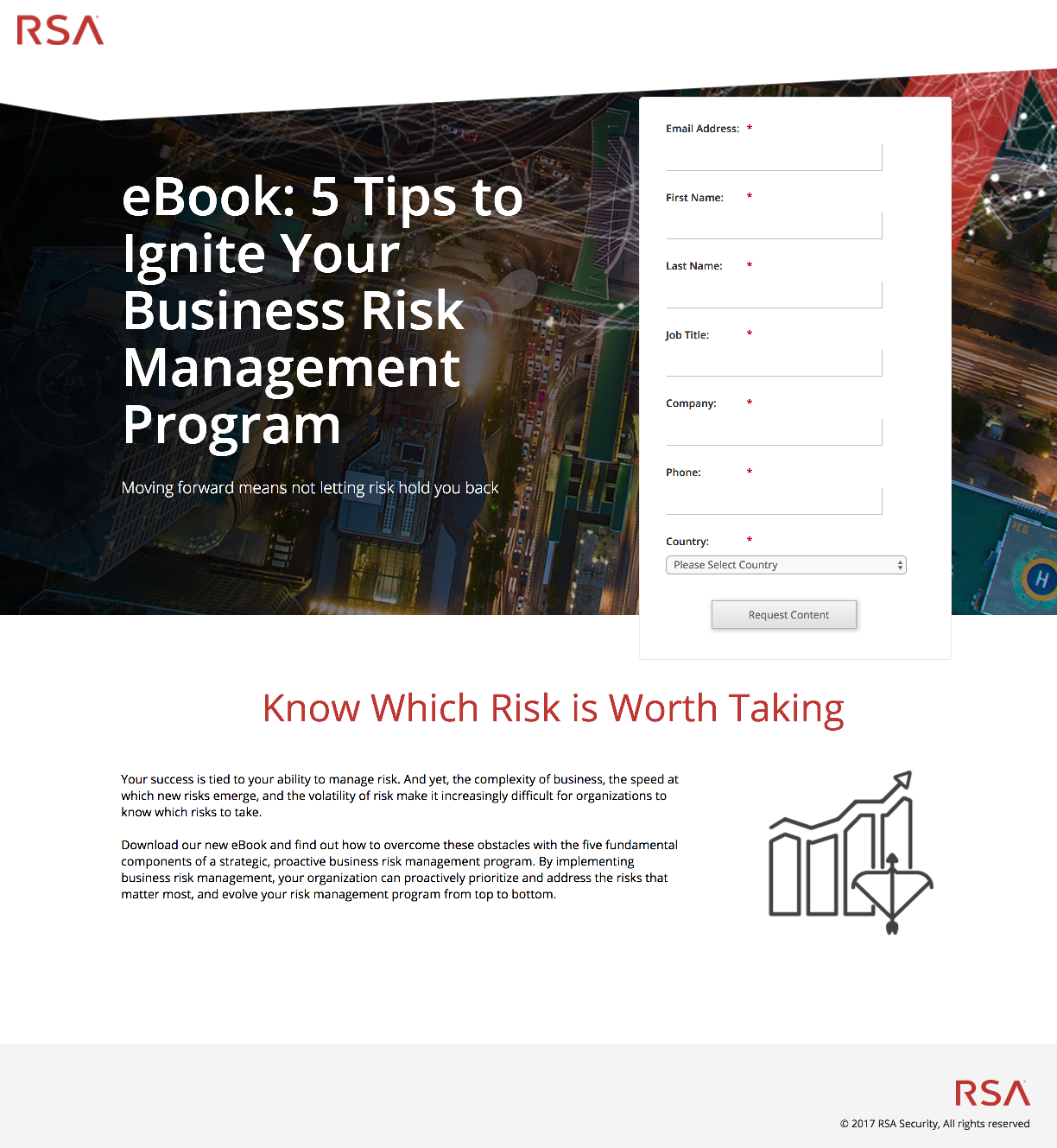
What the page does well:
- The headline in both the ad and landing page message match with each other because they both mention an ebook on RSA Archer’s Risk Management program.
- Minimal copy keeps the reader’s eye from being distracted by other design elements.
- The form is encapsulated with a white border so it stands out as an important element.
- The design of the landing page incorporates the same general layout of the accompanying ad, making the logo a point of familiarity between the two.
- Competing links are not provided, emphasizing the need to click the CTA button.
What could be A/B tested:
- The gray CTA button is too subtle and doesn’t “pop” off the page so it can easily be missed by the reader.
- The 7-field form might appear intrusive to the viewer and require too much effort as well as divulging excessive information.
- “Request Content” is not specific or personalized CTA copy. “Send Me the Ebook” or “I Want the Ebook” would likely produce more conversions.
3. Wix
In another TrueView in-stream example, Wix uses its landing page to convince viewers to use their services:
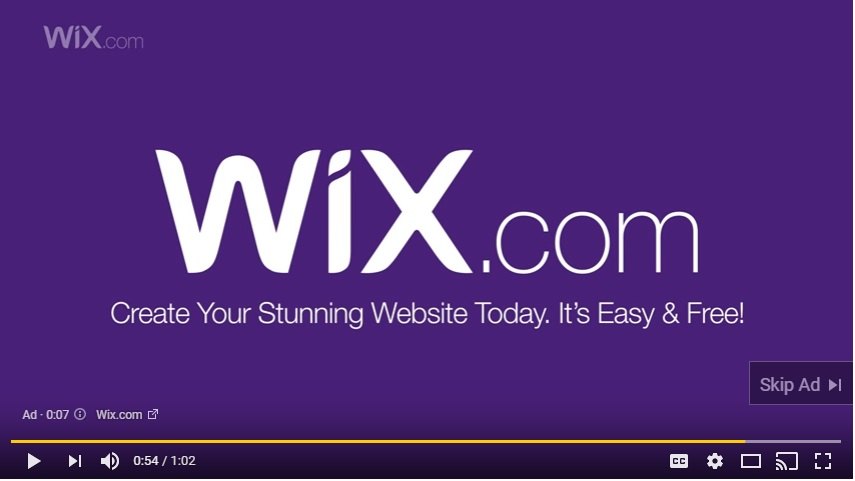
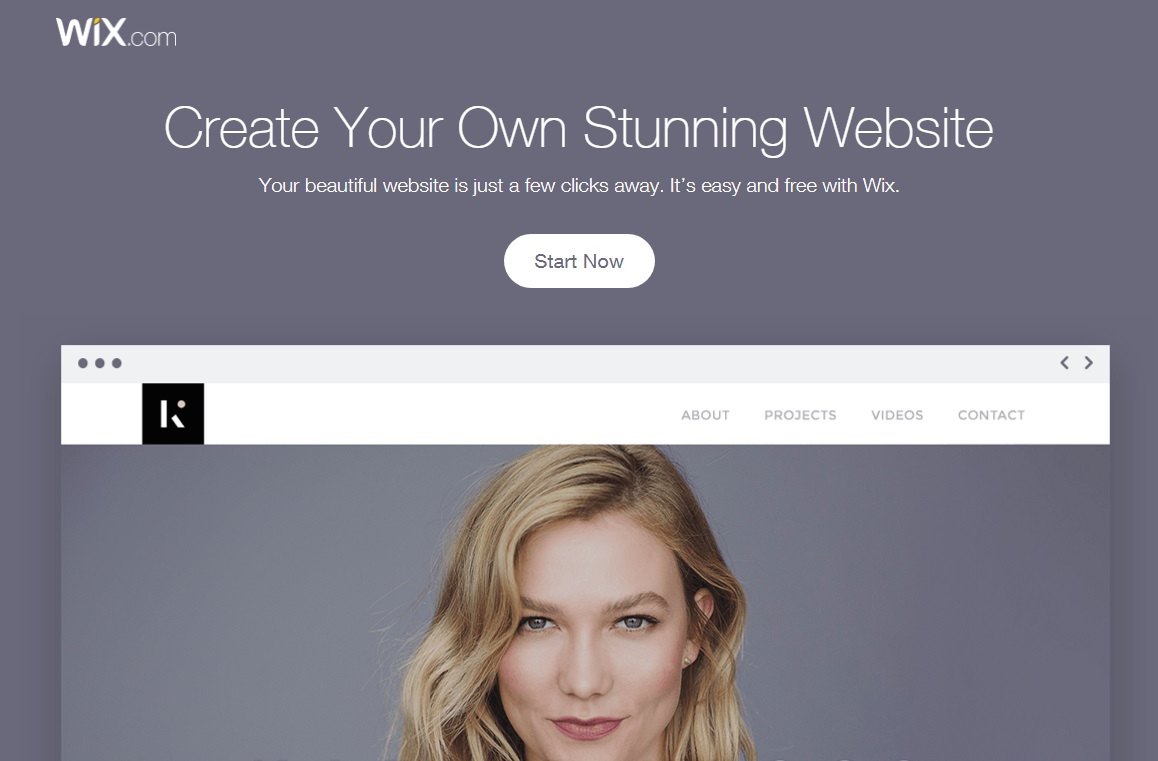
What the page does well:
- Minimal copy keeps the look of the page free from competing distractions to emphasize the central message.
- The headline properly encapsulates the intended meaning of the page and clearly conveys what a reader would gain by clicking on the CTA button.
- The copy used in both the in-stream ad and landing page is similarly worded, establishing a familiarity between the two.
What could be A/B tested:
- The white CTA button blends in too much with the rest the page. Changing the button to orange, for example, would grab more attention.
- The Wix logo, although subtle and unobtrusive, links to the company’s homepage, giving the visitor another option to click.
- The design doesn’t include supporting information, user testimony, or other points that would establish additional confidence for the viewer.
Make the most of YouTube TrueView ads
YouTube’s TrueView ad platform can be a powerful tool for advertisers looking to maximize the impact an ad has with a targeted customer base. However, the platform alone is unlikely to generate greater ROI and sales unless it is part of a cohesive strategy that includes a landing page to tailored to your brand and message.
With 1:1 personalization, AdMap™, Global Blocks, and more, Instapage can help you create the best personalized ad experience while lowering your cost of customer acquisition.
Sign up for an Instapage 14-day free trial today.

Try the world's most advanced landing page platform with a risk-free trial.
